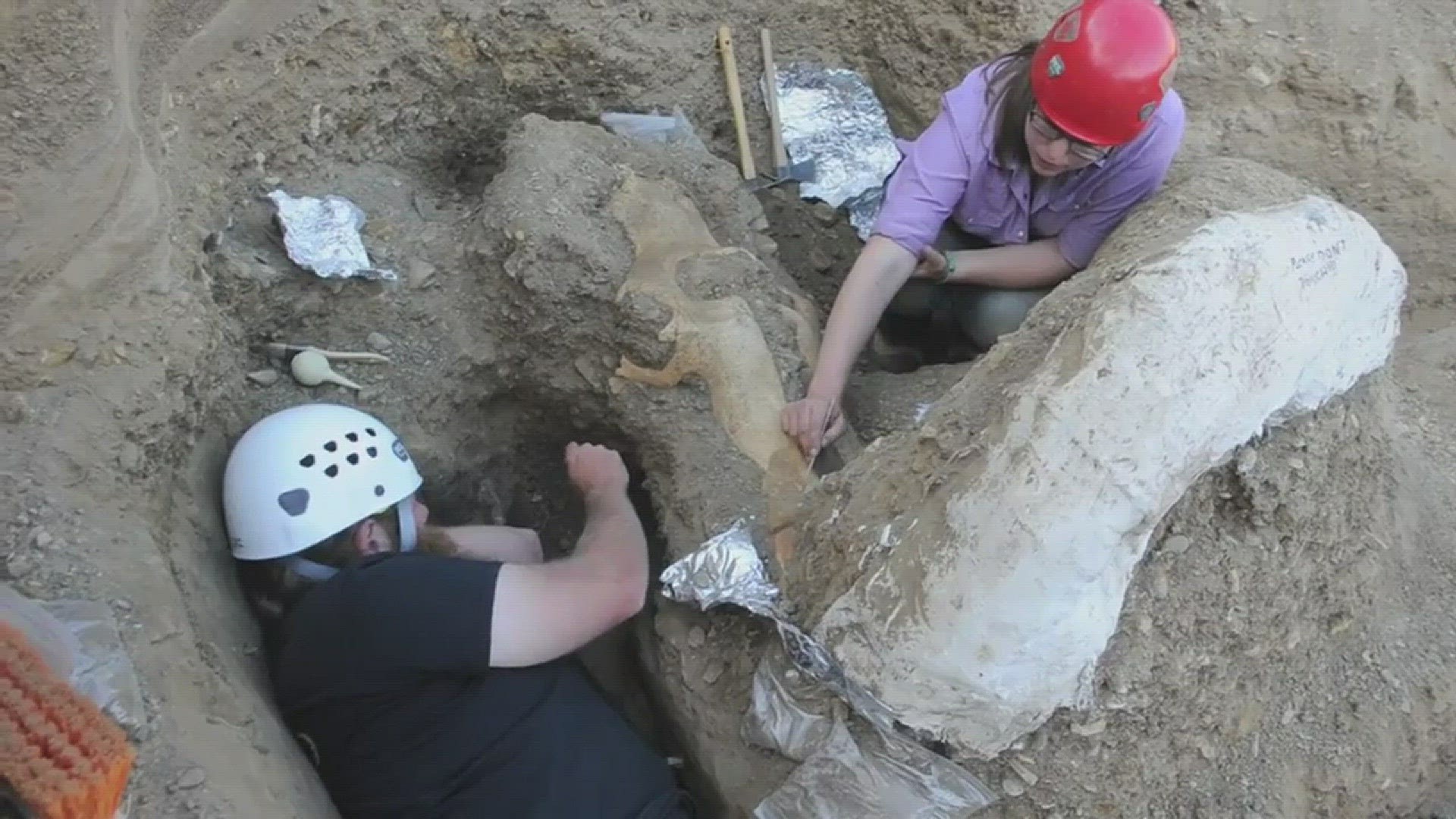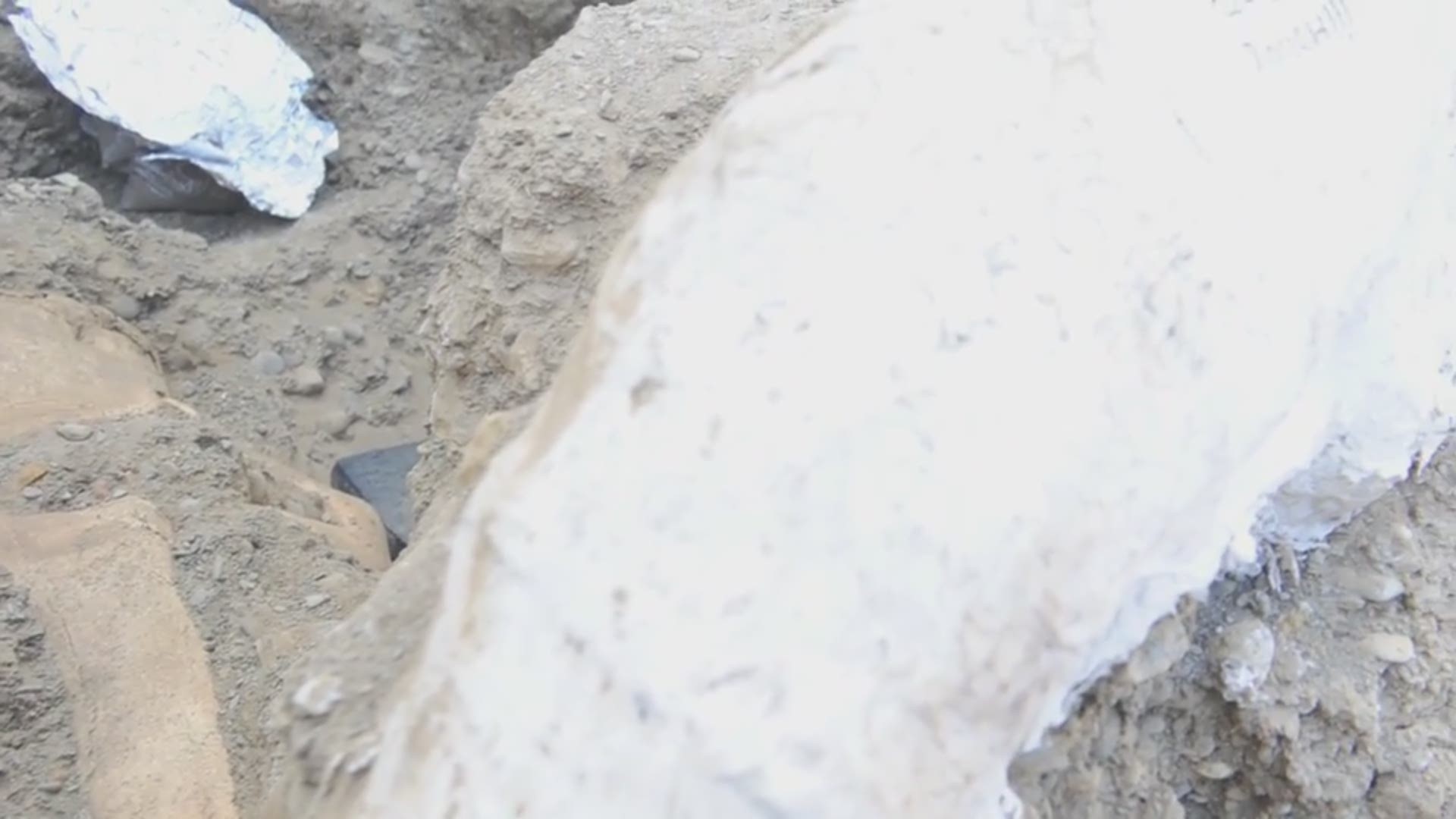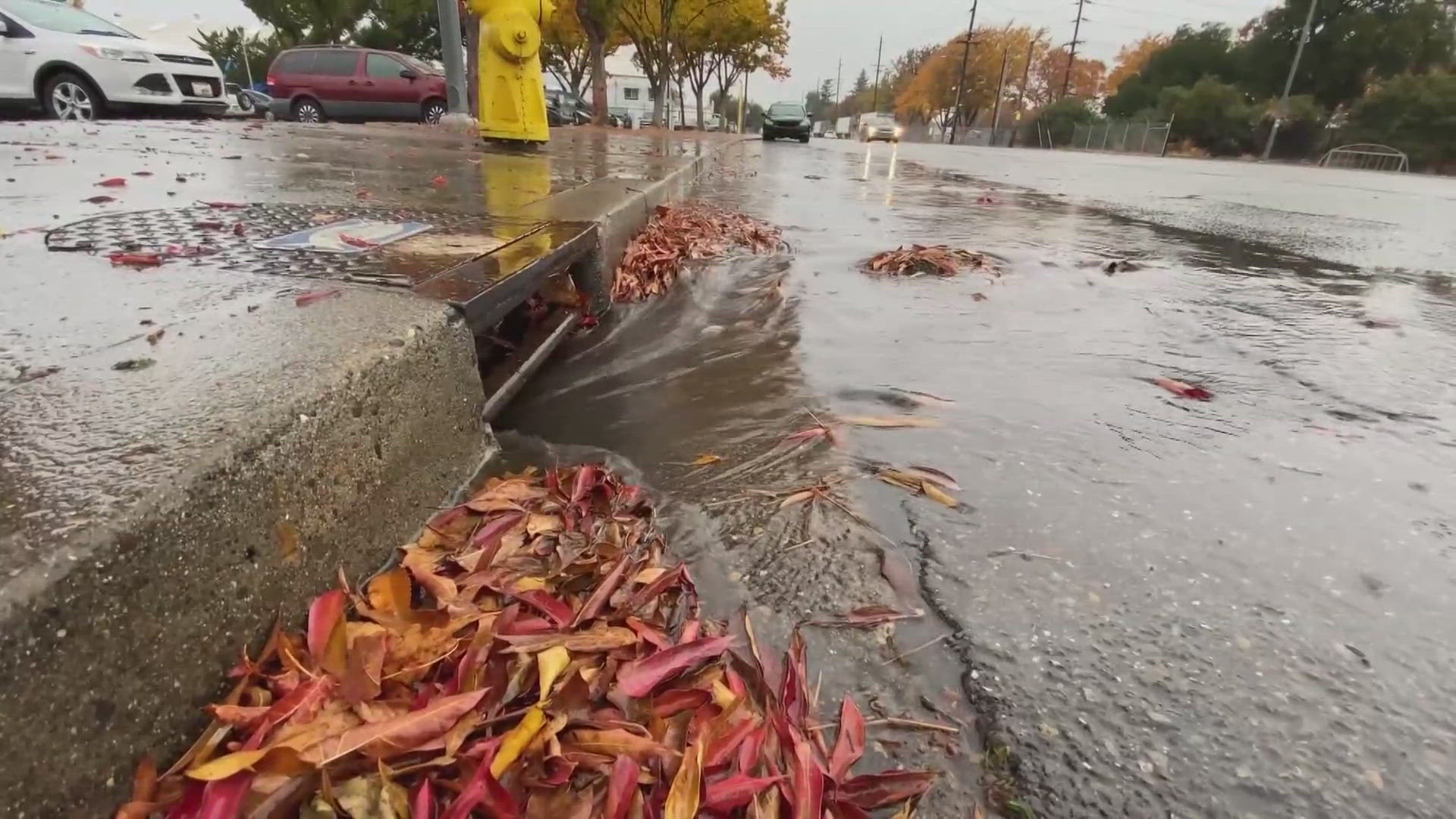Justin Wilkins knelt in the dirt, popping a tiny piece of charcoal out of a carved-out bank.
Part of a team of paleontologists and archaeologists, Wilkins spent the past week on Santa Rosa Island uncovering what might be a link in the evolution of a long-extinct mammoth.
A bone jutting out of the steep hillside had brought them to the spot deep in a canyon, about 40 miles off the Ventura County coast in the Channel Islands National Park.
But what they found wasn’t what they expected.
“It doesn’t fit the profile for a pygmy mammoth or their relatives on the mainland,” said Wilkins, a paleontologist from The Mammoth Site in South Dakota.
Researchers believe Columbian mammoths, which stood up to 14 feet tall and weighed 20,000 pounds, made it to the Channel Islands about 150,000 years ago.
There, with less food, less space and no predators, the giants shrunk to their much smaller descendant, the pygmy mammoth.
“It’s definitely a lot smaller than our Columbian mammoths in South Dakota, but it’s definitely a lot bigger than any pygmy mammoths I’ve seen,” Wilkins said of the nearly pristine skull and tusks.
“That means one of two things. This could be a transitional animal. That’s the hope. That’s the golden spike that we’re looking for. Those are hard to find though,” he said, taking a break Saturday from the slow process of removing dirt and rocks bit by bit.
That’s the long shot.
Another possibility: The skull could belong to a young Columbian mammoth – maybe a bit less dramatic but still a great find, Wilkins said.
“It’s pretty spectacular-looking. It’s one of the best mammoth skulls I’ve seen, and I’ve seen a lot of good mammoth skulls,” he said. Its condition could help scientists fill in more pieces of the history of the animals and the islands.
The answer to the mammoth’s origins would be in its teeth.
On Saturday, that clue was still hours of work from being unearthed from a 3½-foot bed of gravel and silt.
That is, if there were still even teeth left to find.
An unexpected find
Researchers with the U.S. Geological Survey dated charcoal samples near the skull to about 13,000 years ago.
That means the mammoth’s time on the island may have overlapped when humans lived there.
Mammoth fossils have been found on several of the Channel Islands. One of the first discoveries was reported on Santa Rosa more than 150 years ago.
Others followed, and in 1994, paleontologists uncovered a nearly complete skeleton of a Channel Islands pygmy mammoth there. Like the latest find, the pygmy was about 13,000 years old.
More recently, research geologist Dan Muhs was scouting old marine deposits on Santa Rosa when he spotted a bone in a craggy rock just offshore.
The flash of white turned out to be a tusk — one that filled in more chapters of the mammoths’ story.
Muhs, of the Geological Survey, was able to date the tusk to 80,000 years ago, making it the oldest, well-dated mammoth found on the Channel Islands.
Two years ago, a field biologist spotted another flash of white along a canyon wall on the north side of Santa Rosa.
Peter Larramendy, now 27, was surveying streams when he saw what looked like a bone.
“I looked up to the left of me and noticed something white, and it was a lot lighter color than anything else. It stood out,” he said.

Sometimes a rock can look a bit like a fossil, but this felt different, he said. He stopped, took down the GPS coordinates and some photos.
Then he finished the stream survey.
“He noted this, took the location — supremely accurate coordinates — which guided us to this,” said Don Morris, a retired Channel Islands National Park archaeologist who followed up on the find.
Morris and Wilkins went to the spot to take a look the next month. Maybe 2 feet of the tusk was uncovered at that point.
Thinking it was a standard pygmy mammoth tusk, they figured they would dig another 4 inches and get it out.
“We went another 4 inches, another 4 inches, another 4 inches, another 4 inches,” Wilkins said. “That wasn’t the case.”
Chasing clues
Over the past week, the team camped at the site, heading down into the canyon each morning to the bottom of an eroding, 44-foot bank.
Hour by hour, day by day, the mammoth began to take shape.
Its right tusk curved back nearly 4 feet into a full, cream-colored skull.
The fragile forehead area easily could have been crushed, but not this time.
“We’re seeing some damage here, but it’s really minimal. So it’s really, really exciting to have that,” said Monica Bugbee, archaeologist and preparator at The Mammoth Site.
She lay on the dusty ground, using a knitting needle to gingerly prod rocks and dirt off that left tusk.
“The tusks grow throughout the animal’s lifetime, so generally, the longer the tusks, the older the animal,” she said.
“His tusks are so big, and they curve together to the point where there are only a few inches between the tips of the tusks,” she said.
But the bones gave mixed messages.
Big tusks seemed to suggest a possible transitional animal, as did the mammoth’s narrow skull, which seemed closer to pygmy sized but was bigger than expected.
The left tusk, however, was less curvy and might have been closer in size and shape to that of a younger mammoth.
Wilkins filled page after page of a small yellow notebook with notes, measurements and sketches.
"Still a big deal one way or the other,” Wilkins said of the skull and tusks, which might or might not have other bones buried behind them. “You don’t get them like this pretty much anywhere.”
A mammoth called Larry
More clues emerged from the dirt, inch by inch.
The team had uncovered a tooth by late Sunday, but it didn’t give up any quick answers.
“It’s going to help us identify what species it is,” Wilkins said.
But they needed to examine it more closely (and possibly find more teeth) to decide whether it could be pygmy, Columbian or something in between.
That in-between animal could help fill in blanks of how and when mammoths evolved on the islands — basically, a once-in-a-lifetime find, Wilkins said.
“Peter, who found it, would be pretty well credited with one of the coolest things in paleontology,” Wilkins said.
The plan is to unearth the skull and tusks, protect them in burlap and plaster, and then carry them out of the canyon by helicopter to the pier.
From there, they will be loaded on a boat and taken back to the mainland.
Around the site, they called the mammoth Larry.
Short for Larramendy, the nickname also honored Larry Agenbroad, longtime director of The Mammoth Site in South Dakota who died two years ago. He was able to see some of the first photos from the site before his death.
“He’s the reason we are all out here doing this,” Bugbee said.
A leading mammoth expert, he also worked on the Channel Islands, including with Morris in 1994 when they uncovered the nearly complete pygmy skeleton.
“I have instructions for the helicopter,” Morris said to the others. “Take it up high, so Larry can see it.”





